When deciding on a new smartphone, how much you’re willing to pay will be one of your first decisions.
For some people, nothing less than the absolute best phones will do, and they’re willing to pay for it. At the other end of the scale, some people will be able to get everything they need from a budget phone.
But what if you’re looking for something in between? Mid-range phones, which we define costing between £250/$250 and £700/$700 at launch, will be the sweet spot between price and performance for many. Of course, these are the prices when buying outright, so the the situation will be a bit different when buying on contract.
The only mid-range iPhone that Apple sells is the iPhone SE (2022), but that’s not good enough for inclusion here. It means the list below is exclusively Android phones, though there’s still plenty of choice. Below, you’ll find devices from Google, Samsung, OnePlus, Nothing, Motorola, Oppo, Realme and Fairphone.
All 10 phones are available in the UK, but not every one is sold in the US – we’ll indicate where that’s the case. And at the bottom of the page, you’ll find detailed buying advice for mid-range phones.
Why you should trust us: Smartphones are our bread and butter here at Tech Advisor. We’ve been reviewing them since the original iPhone back in 2007, and 17 years later they’re more important than ever. We perform in-depth, real-world testing on every new mid-range phone that’s worth considering, moving our main SIM card to it for at least a week for the most authentic experience possible.
Updated 18 April 2024: In the most recent update, we added the Xiaomi Redmi Note 13 Pro, OnePlus 12R and Poco X6 Pro.
Best mid-range phone 2024
1. Google Pixel 7a – Best overall
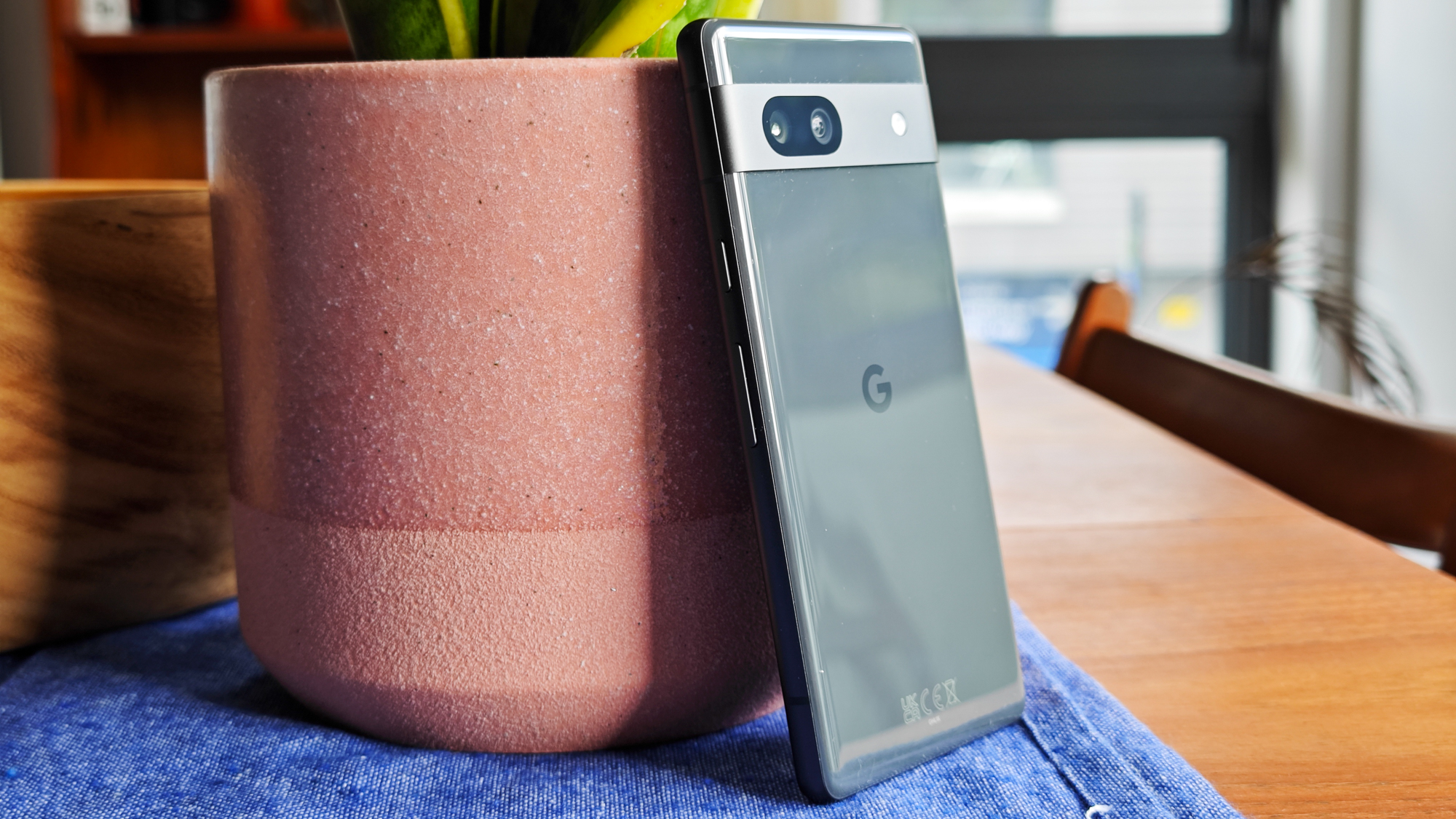


Pros
- Phenomenal camera for the price
- Excellent Google software
- Wireless charging
- Water-resistant
Cons
- Slow charging
- Average battery life
- Only 90Hz display
Price When Reviewed:
£449
The Pixel 7a is a superb mid-range phone that often feels like a flagship.
An outstanding main camera combines with water-proofing, wireless charging, excellent Google software, and powerful performance to outclass almost every other mid-ranger around.
There are compromises. The wired charging is sluggish, and Google doesn’t include a charger in the box. Battery life isn’t bad, but it isn’t great either. Check out our round-up of the best phone chargers.
You’ll also have to put up with a 90Hz refresh rate display, lagging behind the smoother 120Hz panels found elsewhere.
Those are small negatives in an otherwise excellent phone though, and overall the Pixel 7a offers the best bang for your buck out there right now.
Read our full
Google Pixel 7a review
2. OnePlus Nord 3 – The close second



Pros
- Excellent performance
- Strong main camera
- Great build quality
- Super-fast charging
Cons
- No zoom camera
- No water resistance
- Weak macro camera
Price When Reviewed:
£499
An outstanding follow-up to 2022’s OnePlus Nord 2T, with the same 80W fast charging, 5G, OnePlus’s signature Oxygen OS interface, and a near-flagship main camera.
The OnePlus Nord 3 again demonstrates that the company is brilliant at taking exactly what’s needed in a phone, packaging it into a nice, well-built exterior, and topping it with a competent Android skin. What’s not to love?
The Nord 3 misses out on flagship niceties like wireless charging and waterproofing, and its additional cameras are nothing to write home about. But these are really the only compromises you have to make.
There’s also the OnePlus Nord CE 3 Lite, which delivers a stripped-back version for a slightly lower price.
Read our full
OnePlus Nord 3 review
3. Nothing Phone (2) – Best design
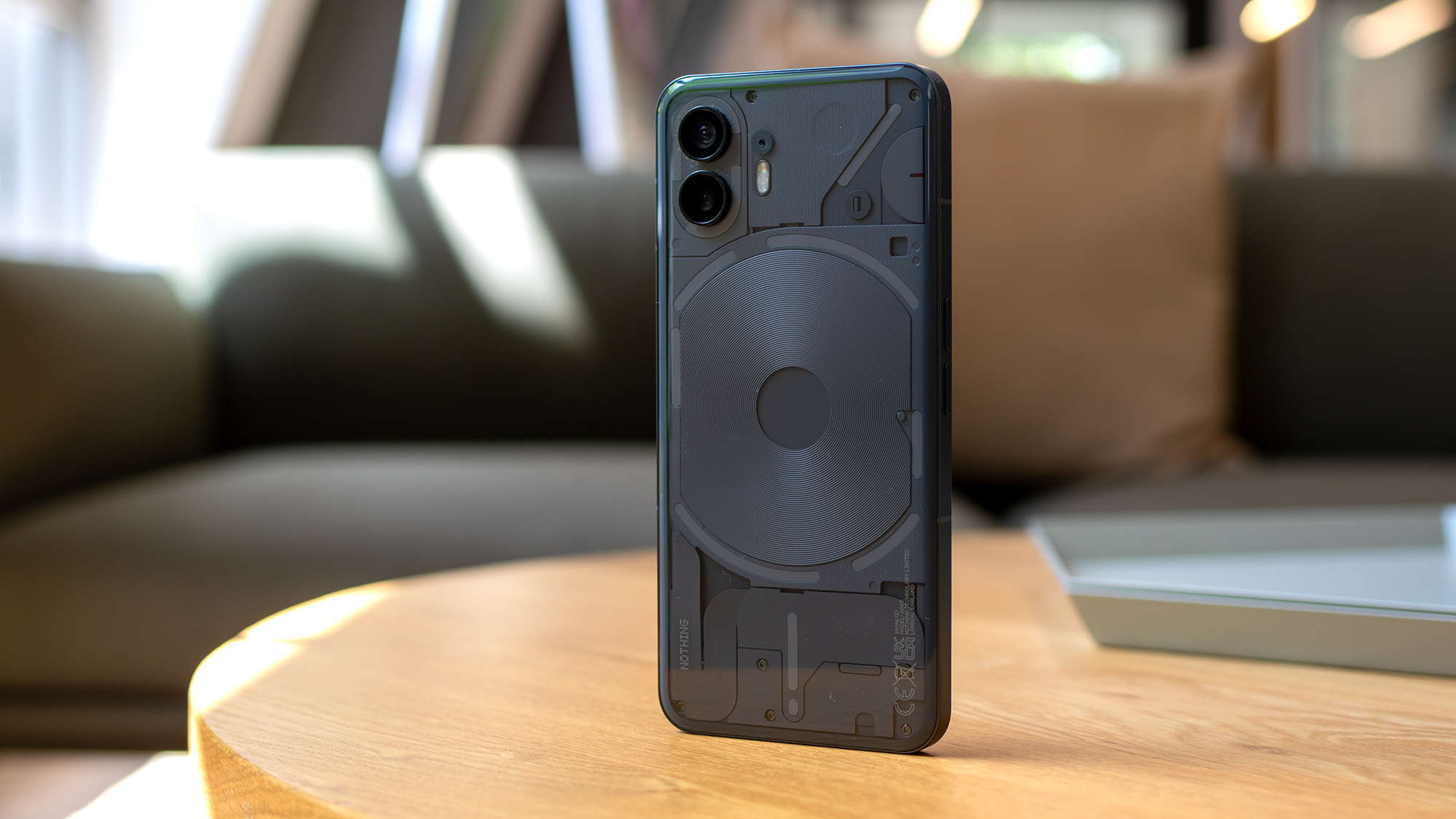


Pros
- Unique, eye-catching design
- Great Android skin
- Premium performance
- Battery life is solid
Cons
- Cameras are average at best
- Screen is a bit dim
- Only IP54
In 2022, the Nothing Phone (1) made quite a splash when it finally launched. It promised to shake up the phone market, and in some ways – especially design-wise – it really did.
Its successor continues the project with much better performance, even more lights, and an even better (and less buggy) Android software experience.
Unfortunately, it also sticks with last year’s cameras, which weren’t the best of the bunch back then.
Set aside the lights, and the Nothing Phone (2) is really just a regular mid-range device, albeit one of the better ones around. Battery life is stellar, but the trade-off is you get a display that is a bit dim. You can make a light show on the back if you really want to, though.
Read our full
Nothing Phone (2) review
4. Xiaomi Redmi Note 13 Pro – Best display
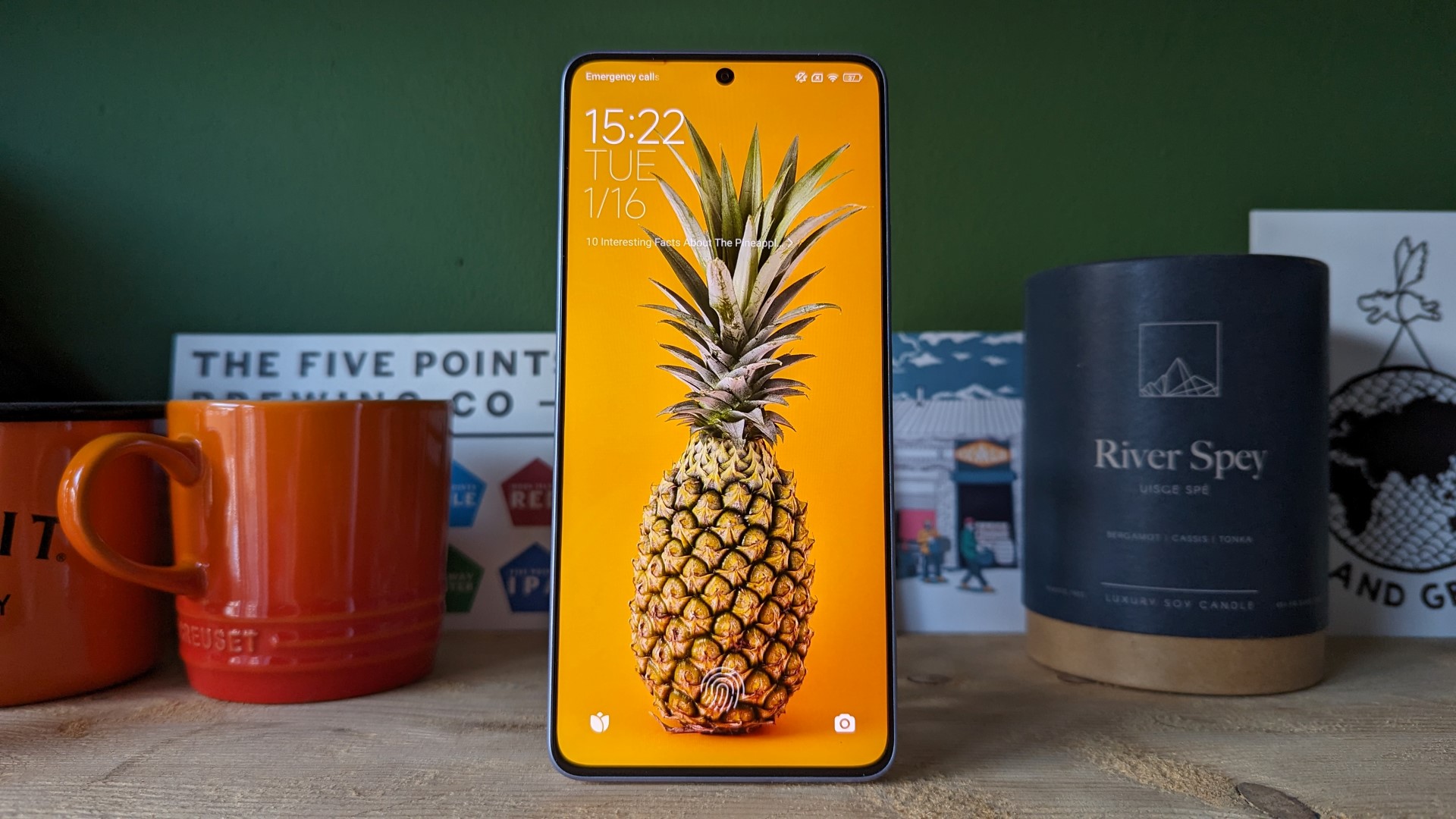


Pros
- Smooth performance
- Bright 120Hz AMOLED screen
- Fast charging
- Generous storage
Cons
- Frustrating software experience
- Limited software support
- Some camera issues
Price When Reviewed:
£339
There are two mid-range phones in the Redmi Note 13 range, but we think you’re better off with the cheaper one.
As good as the Note 13 Pro+ is, it’s also £110 more expensive at launch than the Note 13 Pro. For a slightly more powerful chipset, IP68 water and dust resistance (as opposed to IP54) and faster 120W charging (rather than 67W), we don’t think it’s worth it.
For just £339, the Note 13 Pro still delivers a premium experience, including the excellent 120Hz OLED screen. Performance and charging are still key strengths, as is the high-end design and strong battery life.
The only real issues are on the software side, where Xiaomi’s MIUI skin still leaves a lot to be desired and the company only officially commits to two years of updates.
If you can put up with that, though, the Redmi Note 13 Pro is a superb phone for the money,
Read our full
Xiaomi Redmi Note 13 Pro review
5. OnePlus 12R – Great all-rounder
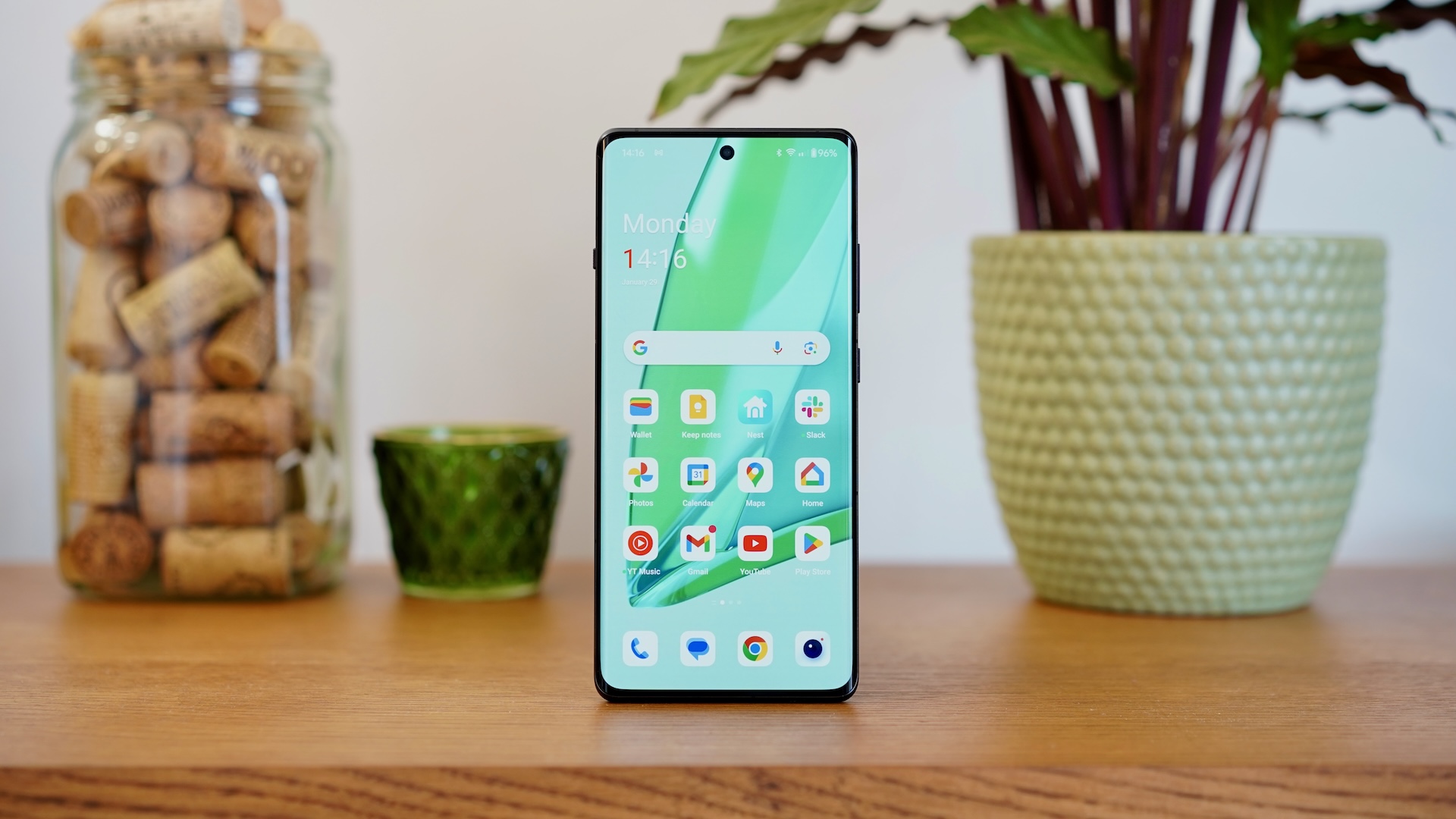


Pros
- Outstanding display
- True two-day battery life
- Strong sustained performance
- 100W fast charging
Cons
- No wireless charging
- Still not completely waterproof
- Mediocre secondary cameras
Price When Reviewed:
£649
The OnePlus 12R isn’t the best mid-range phone at any one thing, but it performs well in nearly all key areas.
That includes a large, gorgeous 120Hz OLED display, strong performance from the older flagship Snapdragon 8 Gen 2 chipset and a 5500mAh battery that can stretch to two full days. Alongside 100W fast charging and slick software, it’s almost the full package.
However, cameras are an obvious weakness, with a decent main rear sensor supported by some underwhelming secondary lenses. It’s also missing some of the features you might be hoping for at this upper mid-range price, including wireless charging and a flagship-level IP68 water resistance rating.
But if you can live without these, you won’t be disappointed with the OnePlus 12R.
Read our full
OnePlus 12R review
6. Google Pixel 8 – Best camera



Pros
- Outstanding main camera
- Impressive performance
- Excellent Android 14 software
- Seven years of updates
Cons
- Underwhelming battery life
- Slow charging
- No telephoto camera
Price When Reviewed:
From £699
At £699/$699, the Pixel 8 is only just cheap enough to be considered a mid-range phone. It certainly feels like a flagship, and one of the best compact phones you can buy at any budget.
The main camera lens remains the highlight, delivering stunning stills in a variety of environments – including at night. The ultrawide and selfie lenses aren’t bad either, though you miss out on the telephoto from the Pixel 8 Pro.
Performance from Google’s Tensor G3 chip is only slightly inferior to Qualcomm’s latest and greatest, and it enables a range of clever software features – including Best Take. The rest of the Android 14 software isn’t bad either, especially with Google promising seven years of updates.
Battery life is the main weakness, and becomes even more frustrating when combined with slow 27W charging and no charger in the box.
But the combination of premium design and 6.2-inch, 120Hz OLED display mean the Pixel 8 is definitely worth considering. Don’t rule out the older Pixel 7 though, which is much more affordable.
Read our full
Google Pixel 8 review
7. Motorola Edge 40 Neo – Best under £300



Pros
- Premium yet lightweight design
- Great performance
- 144Hz OLED display
- Solid cameras
Cons
- Buggy curved screen
- Only three years of updates
- Not available in the US
Price When Reviewed:
£299.99
Put simply, the Edge 40 Neo is the best phone you can buy for under £300. It’s such a shame it isn’t sold in the US, though it may be possible to import one.
That’s not something worth considering for most handsets, but the Edge 40 Neo isn’t like most phones at this price.
A stunning 6.55in, 144Hz OLED display is the best example of this, delivering a excellent viewing experience. If only it wasn’t curved, which does more harm than good. MediaTek’s Dimensity 7030 chipset might not sound like anything special, but it ensures consistently excellent performance.
The cameras are good, provided you use the 50Mp main rear sensor for most of your photos. The 13Mp ultrawide is useful in some situations, but not nearly as high quality. Battery life is average, but it’s nice to get fast 68W charging using the included power brick.
However, while Motorola’s take on Android is impressive, the company only commits to two years of OS updates and three years of security updates. It means nothing beyond Android 15 and 2026, but the Edge 40 Neo is still easy to recommend.
If you’re looking for something more premium, though, consider the regular Motorola Edge 40.
Read our full
Motorola Edge 40 Neo review
8. Poco X6 Pro – Best performance
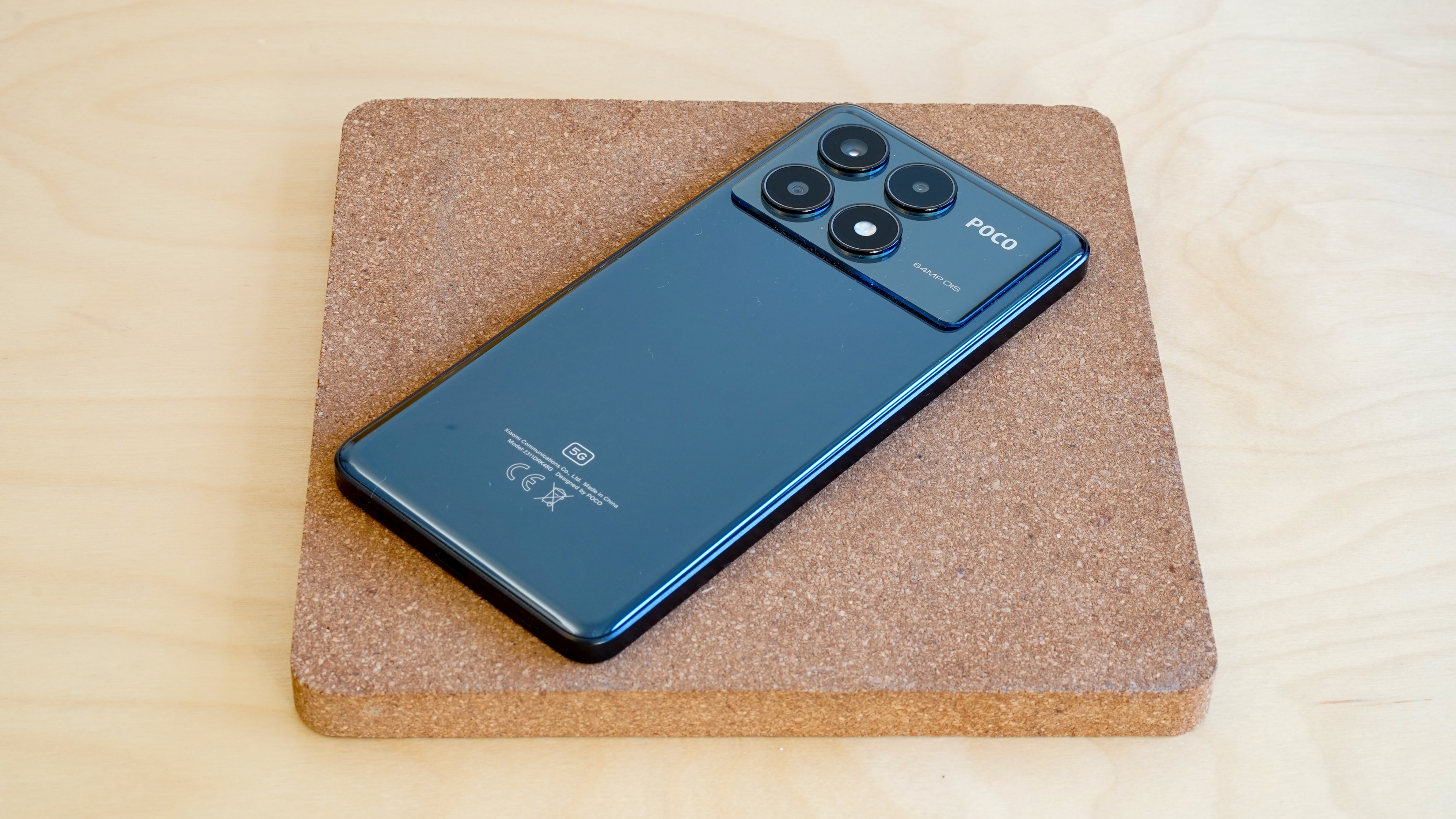


Pros
- Outstanding performance for the money
- Advanced display
- Subtle design improvements
- Fast charging with adapter included
Cons
- Not the best cameras
- New HyperOS UI much like MIUI
- Bland looks on some models
- Not available
Price When Reviewed:
£369
The Poco X6 Pro is the second Xiaomi phone in this round-up, though its Poco sub-brand is focused on speed.
And that’s very apparent here, with the X6 Pro offering some truly excellent performance. Its MediaTek Dimensity 8300 Ultra chipset speeds through pretty much all tasks – including gaming.
It’s supplemented by a very good 120Hz OLED display a core part of a very premium albeit plain design. Strong battery life pretty much guarantees a full day of usage, while the necessary 67W fast charger is included in the box.
Cameras are the obvious weakness, and Xiaomi’s MIUI replacement (known as HyperOS) still needs work, but it’s still a stellar cheap phone for day-to-day usage.
You can save some money by opting for the regular Poco X6 5G instead, but there are a few downgrades there.
Read our full
Poco X6 Pro review
9. Oppo Reno 10 5G – Excellent cameras



Pros
- Impressive cameras
- Solid battery life
- Great 120Hz screen
- Good value for money
Cons
- No IP rating
- Extra pre-installed apps
- Only two years of OS updates
- Not available in the US
Price When Reviewed:
£399
Compared to flagship phones, cameras are often compromised on mid-range handsets. But the Oppo Reno 10 5G proves that doesn’t have to be the case.
An excellent 64Mp main sensor delivers excellent shots in a variety of different environments, and it’s specifically designed for great portrait-style photos. The telephoto and selfie lenses (both 32Mp) are also impressive, though it’s probably worth avoiding the 8Mp ultrawide.
But with decent MediaTek Dimensity 7050 performance, all-day battery life an impressive 6.7in OLED 120Hz display, the Reno 10 5G has a lot going for it. You’ll have to put up with a lack of IP rating and extra apps you don’t need, though.
Whether you buy this phone might come down to your opinions on ColorOS 13, Oppo’s skin over Android 13. It makes relatively subtle changes to the experience on Pixel phones, but there are lots of annoying pre-installed apps. And Android 15 will be the last major version it gets, despite four years of security updates.
Read our full
Oppo Reno 10 5G review
10. Fairphone 5 – Best for sustainability



Pros
- As repairable as it gets
- Fun, transparent back
- Five-year warranty
- Eight years of software support
- Desktop mode
Cons
- It’s big, thick, and heavy
- Underpowered SoC
- The display is only 90 Hz
- Not available in the US
There are two ways of looking at Fairphone 5. If you look at its specs alone, it really is nothing special. Its processor is quite slow, the screen isn’t the best, and the whole package is chunky and not as sleek as the competition.
On the other hand, you can look at it as a cause. It’s so repairable that you can take it apart with only a screwdriver and replace every part just as easily, with replacements available straight from Fairphone. It’s a statement against all the other brands that make your phone impossible – or uneconomical – to repair.
What’s more, it has other things going for it. The five-year warranty and eight-year software support are in a class of their own. It also has some nice tricks up its sleeve such as a desktop mode if you want your phone to be your only electronic device, plus a nice, retro-looking back panel.
So, don’t buy Fairphone 5 if you want all the performance and specs you can get for your money. Buy it if you support what it stands for.
Read our full
Fairphone 5 review
Buying advice for mid-range phones
What is a mid-range phone?
There’s no technical definition, but as mentioned above, we define mid-range phones based on price: anything that costs more than £250/$250 but less than £700/$700 if you buy it SIM-free.
Anything cheaper than that is really a budget phone, and anything more expensive is a flagship.
Some mid-range phones will take the all-round good-value approach, with capable specs in each area; others will focus on a key trait, such as the camera or display, and promise flagship-rivalling capabilities in that one aspect; others still used to be those flagships, so will offer fantastic specs at a brilliant price, but may be running on slightly older hardware.
What specs do I need?
Every mid-range phone offers a compromise, trying to deliver the best of a flagship without costing quite so much. Still, there are some specs you don’t want to skimp on. Look for at least 6GB of RAM and a Snapdragon 7 or 8 chipset for smooth performance (or another brand equivalent), along with at least 128GB storage.
After that, it’s about deciding on your priorities. Are you looking for long battery life, fast charging, an OLED display, or a powerful camera? Few mid-range phones offer all of them, so pick which matters most to you.
One common element is that you’ll likely have to give up on nice-to-haves like wireless charging or a waterproof rating – these still tend to be reserved for the most expensive phones on the market, though a few mid-range devices do offer one or the other.
Try to remember that it’s not always about specs either. We’ve hit something of a ceiling when it comes to smartphone tech anyway, so although these phones may not be as fast as your average flagship, they are almost certainly fast enough for most users. Go for a phone that balances value, performance, features and design in a way that appeals to you and your needs.
Is there a mid-range iPhone?
There is one mid-range iPhone on the market – the 2022 iPhone SE – but we don’t think it offers great value compared to Android rivals. Consider it if you know you need an iPhone, but otherwise steer clear.
Instead, you’re probably better off looking at an older flagship iPhone, especially with discounts common at third-party retailers. Since Apple’s software support runs for so long, even an old iPhone should still run well for a few years, but bear in mind that you’ll likely miss out on some of the more modern features found in modern Android mid-rangers.
Why isn’t every mid-range phone on sale in the US?
If you’re in the US or Canada, you may find that not every phone in our round-up is available for you to buy. Unfortunately that’s because many of the biggest Chinese phone manufacturers simply don’t sell their products in the US.
Chinese phones are a great choice in the mid-range market because they often balance very good specifications with a lower price than you’d expect. The likes of Xiaomi, Realme, and Poco often offer staggering value, but for anyone in the US they’ll be import-only.
Related articles
- Best UK and US SIM-only deals
- Best UK phone networks
- Best UK PAYG phone networks
- Best smartphones
- Best budget phones